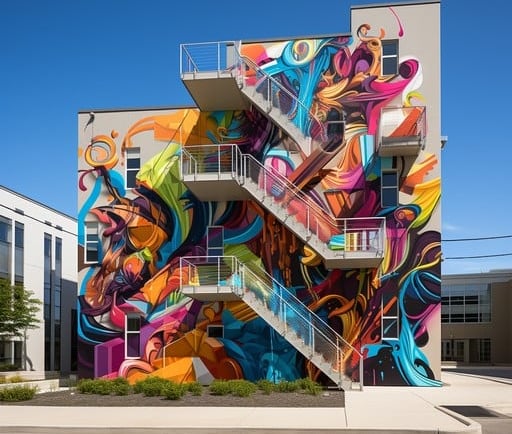Transforming Spaces: The Impact of Sculptures, Murals, and Artistic Facades
8/17/20252 min read
Introduction to Artistic Transformations
In the ever-evolving world of architecture and interior design, the integration of art plays a pivotal role in redefining spaces. Sculptures, murals, and artistic facades serve not only as decorative elements but also as narratives that enhance the character of environments. Through creative artistry, these elements bring life to otherwise mundane structures, creating immersive experiences for inhabitants and visitors alike.
The Role of Sculptures in Space Transformation
Sculptures stand as monumental representations of creativity, often acting as focal points in parks, plazas, and urban centers. Their three-dimensional nature encourages interaction from the audience, inviting viewers to engage with the piece on a personal level. From abstract forms to realistic figures, sculptures can convey a wide range of emotions and messages, making them essential in transforming public spaces. For instance, a well-placed sculpture can add visual intrigue and stimulate conversation, turning an ordinary area into a vibrant gathering spot.
The Power of Murals in Enhancing Environments
Murals, often painted on large walls, serve as powerful tools for storytelling and cultural expression. They can reflect the history and identity of a place, fostering a sense of community pride and belonging. By utilizing bold colors and intricate designs, murals have the capacity to completely alter the ambiance of a space. In urban areas, they can revitalize neglected neighborhoods, turning blank walls into canvases of creativity. Moreover, murals can convey social messages, raising awareness on various issues and sparking dialogues among viewers.
Artistic Facades: The Exquisite Exterior
Artistic facades encapsulate the essence of a building and provide an opportunity for innovative expression in architecture. These facades can incorporate various materials including glass, metal, and wood, allowing artists to experiment with textures and patterns that harmonize with environmental surroundings. A captivating facade can attract attention while also reflecting the architectural style of the neighborhood. It becomes an extension of the interior, signaling the creativity that resides within. From stunning installations to intricate carvings, these artistic exteriors frame the experience of entering a space.
Conclusion: The Harmony of Art in Architecture
In conclusion, the integration of sculptures, murals, and artistic facades plays a transformative role in enhancing spaces. They not only serve aesthetic purposes but also engage the public, stimulate emotions, and create shared experiences in our environments. By embracing art, we enrich our surroundings and foster greater appreciation for the cultural narratives and creative expressions that define our shared spaces.




